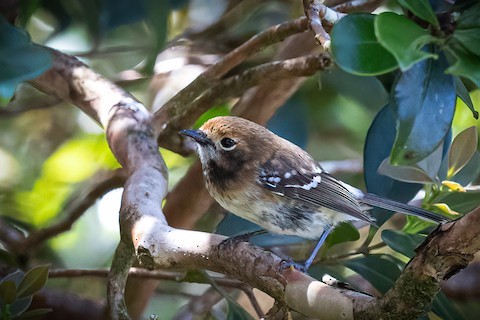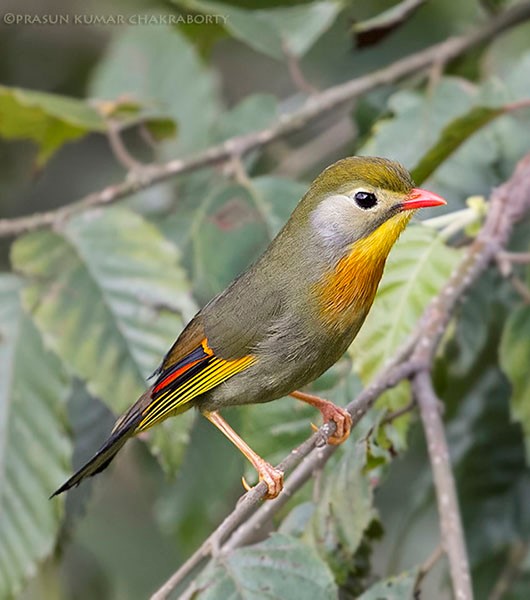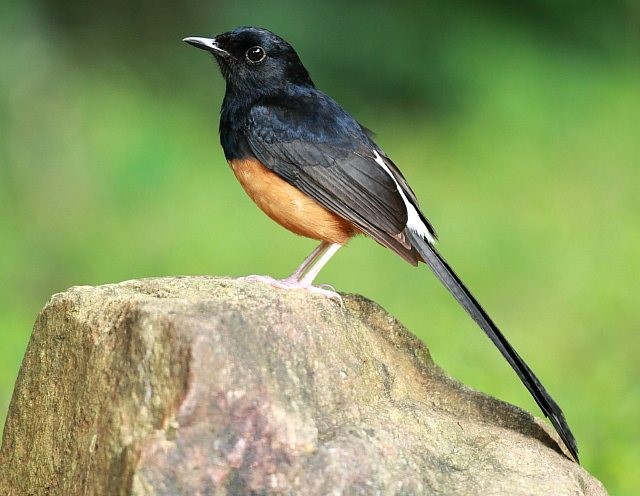Kuli’ou’ou Kalani Iki, Oahu, Hawaii
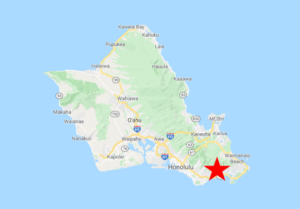
Kuli’ou’ou Kalani Iki is a hilly district of East Honolulu where Oahu’s two remaining endemics, the Oahu Elepaio and the Oahu Amakihi, are found consistently, along with the Apapane, which is more sporadic. These birds can be found along a handful of popular hiking trails, through forests that also support populations of several exotic species, including White-rumped Shama, Red-vented and Red-whiskered Bulbuls, Warbling White-eye, and Red-billed Leiothrix.
Orientation
Directions
Kuli’ou’ou Kalani Iki is in East Honolulu, along the Kalaniana’ole Highway (a.k.a. Highway 72), about 10 minutes’ drive (6 miles) from downtown, or 20 minutes (12 miles) from Daniel K. Inouye International Airport.
From the Airport. Take the main freeway, H1, east into and through downtown Honolulu. After about eleven miles it will slim down and become Highway 72 (a.k.a. the Kalaniana’ole Highway). This is approximately the western boundary of Kuli’ou’ou Kalani Iki. About a quarter-mile farther, at the third traffic light, is the intersection with Laukahi Street, which is the access route to Wiliwilinui Ridge Trail. Four miles farther east, the Kalaniana’ole Highway intersects with Kuli’ou’ou Road.
Attractions
Koko Head District Park is about two miles east of Kuli’ou’ou Kalani Iki.
Birdfinding
Kuli’ou’ou Kalani Iki is dominated by a series of narrow valleys and ridges on the leeward flank of the Ko’olau Range. The Kalaniana’ole Highway runs along the coast and a series of roads branch uphill into neighborhoods separated by steep slopes. A few of these neighborhoods have well-established trails that lead higher into the hills.
Kuli’ou’ou Kalani Iki is one of the last strongholds of the endangered Oahu Elepaio, as it is home to about one-quarter of the global population. It is found most often along three trails: Wiliwilinui Ridge, Wailupe Valley, and Kuli’ou’ou Valley. (The last is approximately the eastern limit of its range, so its presence there may be less reliable over time.)
Oahu’s other endemic, the Oahu Amakihi, also inhabits Kuli’ou’ou Kalani Iki, but it wanders in search of blooming trees, so its presence in any given location is more sporadic. It tends to be seen most readily from trails that remain on higher ground: Wiliwilinui Ridge, Hawaii’loa Ridge, and Kuli’ou’ou Ridge. Though common on other islands, the Apapane is much less common and more sporadic than the amakihi both here and on Oahu in general.
Other species often encountered along the trails of Kuli’ou’ou Kalani Iki include: White-rumped Shama, Red-vented and Red-whiskered Bulbuls, Warbling White-eye, and Red-billed Leiothrix. Two more Asian exotics are well-established as long-term residents but have declined and are seen infrequently: Japanese Bush-Warbler and Chinese Hwamei.
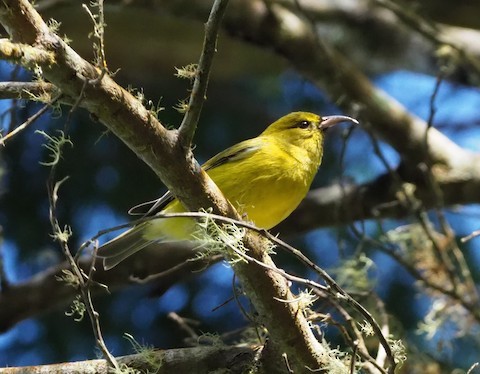
Male Oahu Amakihi. © Stephan Lorenz
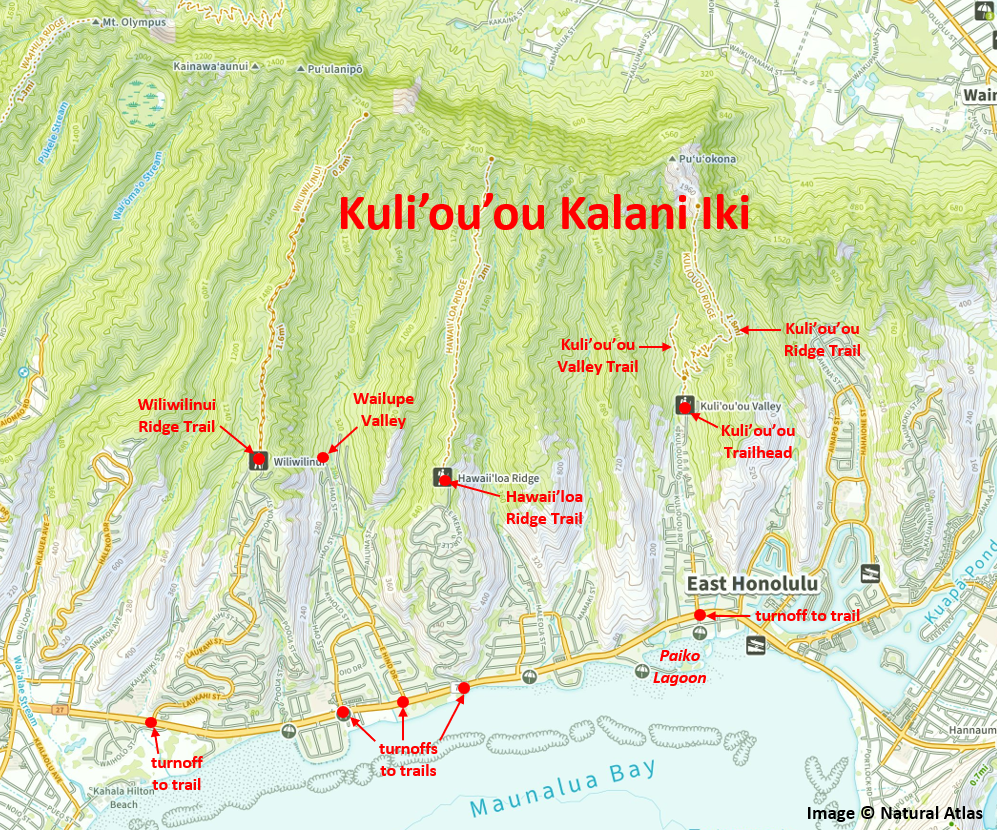
Wiliwilinui Ridge Trail. Probably the best trail in the area for all purposes combined because it is longer than the rest, climbs higher, offers scenic views, and consistently yields sightings of both Oahu endemics. To reach it, turn north on Laukahi Street, which winds uphill for 2.2 miles to a T-junction with Okoa Street. Turn left on Okoa Street and follow it 0.4 miles to its end at the trailhead.
Wailupe Valley. The valley below Wiliwilinui Ridge to the east lacks an officially recognized and mapped trail, but is accessible on foot and supports a high density of elepaios. To reach this area, starting from the Laukahi Street junction with the Kalaniana’ole Highway, drive 1.4 miles east to West Hind Drive. Turn uphill and drive about 0.3 miles to the first left, Nohu Street. This is very short block to Hao Street, which continues uphill for about 2.5 miles and ends at a cul-de-sac with a trail into the forest. (There are a few roughly equivalent alternative routes from the Kalaniana’ole Highway through the Wailup Valley neighborhood to the top of Hao Street.)
Hawaii’loa Ridge Trail. Another option that can produce sightings of both endemics and the Apapane. Seems to be less consistent for the elepaio, but the relative scarcity of sightings may also be due in part to generally lower visitation by birdwatchers. To reach this trail, starting from the Laukahi Street junction with the Kalaniana’ole Highway, drive 2.1 miles east to Pu’u’ikena Drive, which is a right exit. The exit makes short loop, then returns to an intersection with the highway, with a traffic light. After crossing the highway, remain on Pu’u’ikena as it winds uphill for 2.5 miles, then ends at the Hawaii’loa Ridge Trail.
Kuli’ou’ou Valley and Ridge Trails. A long-favored site where the elepaio has been found consistently for decades—but may have suffered from too much attention. After about 100 m, the trail forks. The Kuli’ou’ou Valley Trail remains level, while the Kuli’ou’ou Ridge Trail climbs to the right up a long set of switchbacks. The elepaio is most often found along the lower trail starting around a quarter-mile from the trailhead.
To reach these trails, starting from the Laukahi Street junction with the Kalaniana’ole Highway, drive 4.1 miles to Kuli’ou’ou Road. Turn left and remain on it for about one mile, taking the obvious dogleg turns halfway up. About two miles above the highway, just before the road ends, turn right onto Kala’au Place, which quickly dead-ends at the Kuli’ou’ou Trailhead.
Paiko Lagoon. At the bottom of the Kuli’ou’ou Valley, the Kalaniana’ole Highway passes beside Paiko Lagoon, which is designated as a wildlife sanctuary. The shallow, nearly enclosed bay provides good habitat for shorebirds, and has attracted rarities such as Great Egret and Glaucous-winged Gull. More typical are Black-crowned Night-Heron, Pacific Golden-Plover, “Hawaiian Stilt”, Ruddy Turnstone, and Wandering Tattler.
The main access point is at the foot of Kuli’ou’ou Road, directly across the highway from the route up to the Kuli’ou’ou Valley Trail. (However, it may be more convenient to park one block east, at the foot of Bay Street, in the lot at Kuli’ou’ou Beach Park.)
Services
Accommodations
Honolulu has an abundance of accommodations concentrated in Waikiki, three miles west of Kuli’ou’ou Kalani Iki.
